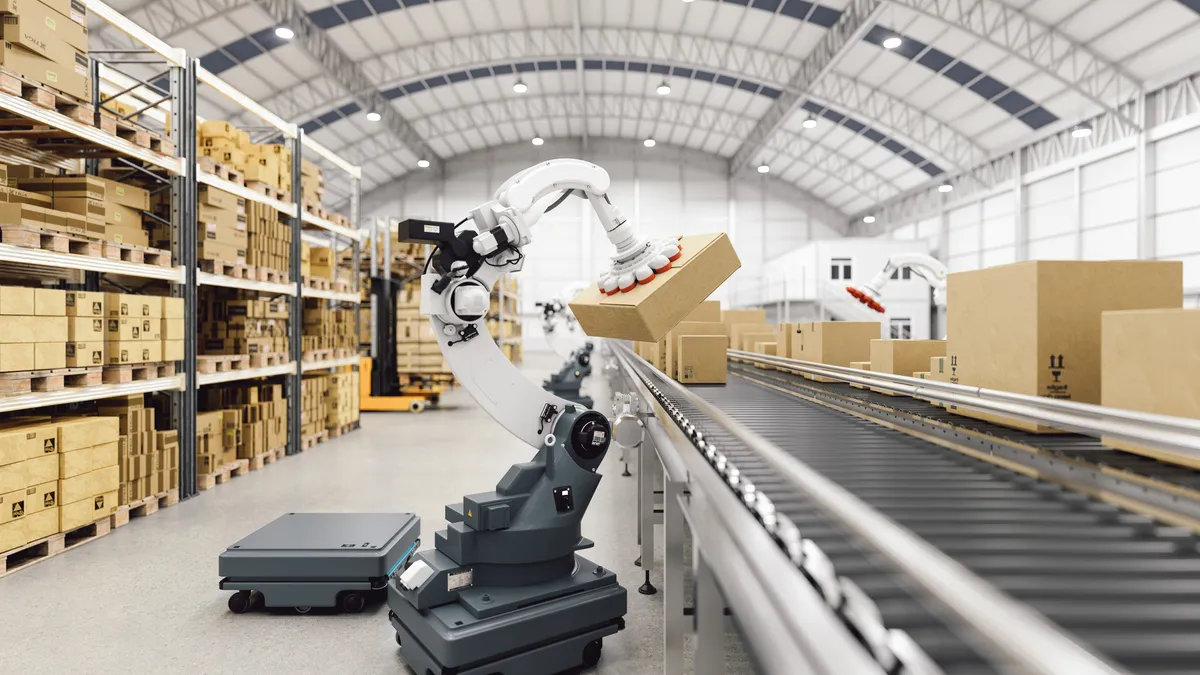Dive Brief:
-
The warehouse automation industry’s growth rate could return to double digits by 2025 after a recent slowdown that is expected to worsen before it eventually subsides, according to market research firm Interact Analysis.
-
Warehouse automation revenues are projected to reach $51.4 billion by 2025, a 15% increase compared with estimated 2024 levels, according to Interact Analysis data provided to sister publication CFO Dive. The double-digit revenue growth is expected to follow a 7% year-over-year uptick in 2024 and a 1.6% decline in 2023.
-
“We think we are at rock bottom right now and can only go up from here,” Rueben Scriven, a research manager at U.K.-based Interact Analysis, said in an interview.
Dive Insight:
Renewed e-commerce growth and a post-COVID-19 pandemic shift to “just-in-case supply chains” — a strategy focused on keeping large inventories on hand — will drive an uptick in warehouse construction in 2024, which in turn will fuel an increased demand for automation tools, according to a recent update from Interact Analysis, whose research focuses on global supply chain automation.
“Many companies now factor in a greater degree of unpredictability, and this has a knock-on effect on warehouse construction, with companies requiring higher inventory and therefore more storage capacity,” the research firm said in a press release. “This is likely to drive an increase in warehouse construction during 2024 and 2025, and, ultimately, growth in warehouse automation revenues in 2025.”
Warehouse automation demand spiked following the COVID-19 pandemic as e-commerce accelerated and increased the need for warehousing space, particularly in industries such as retail, manufacturing, logistics and parcel delivery. However, demand started to dip in 2022 due to excess capacity built during the pandemic, a decline in e-commerce rates and the overall slowdown in the global economy, according to Interact Analysis.
Industry revenues reached $36.4 billion in 2021, a 30% increase compared with the prior year, according to the research firm. The growth rate then decelerated to 16.6% in 2022.
E-commerce is now showing signs of post-pandemic stabilization, Scriven said.
“Companies overspent on automation during the pandemic because they expected e-commerce to grow more than it did,” he said. “Then, with interest rates rising and e-commerce rates slowing, we saw companies spend less on automation. However, now, we’re starting to see those investments pick up again.”
Amazon, Maersk and DHL Supply Chain are among warehouse operators that are investing heavily in technology as they manage labor challenges and high e-commerce volumes.













